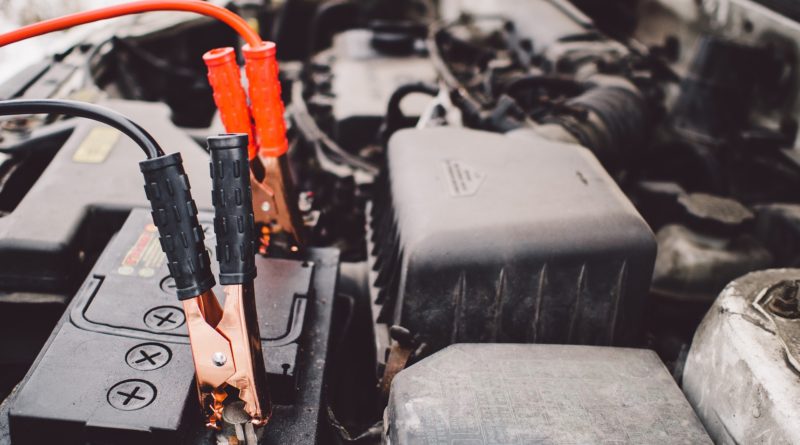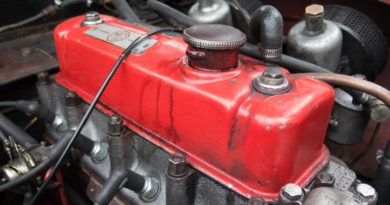A Full Guide to Car Battery Maintenance
Car batteries are a tough nut to crack. They’re often seen as a bit of a mystery when it comes to good car health, as they just work…until they don’t. You hear the dreaded grinding ticking ignition not doing the job. Most people think that unless you leave your lights on then you’ll be fine, but sadly, that’s not always the case. Learning how long your car battery can sit unused is a vital part of car battery maintenance, and you really could do to know about it.
Before we get into all of this, however, it’s a good idea to learn about car batteries in general. Understanding what they do and how they work from a brief perspective is a great way to make all of this make sense.
What do Car Batteries Do?
Keeping things as brief as possible, car batteries are used to give your car energy, just like they are with anything else. It gives your engine and ignition system the kick it needs to start up properly, and then continues on to power all of your onboard electricals. That’s a lot more than you might think.
The car battery is essential for absolutely all of these roles, so it’s important stuff.
How do They keep Charged?
So if you ever find yourself asking how long can a car battery sit unused, it’s probably because you already know this, but even if you don’t then we’ll remind you; car batteries die over time. They don’t hold their charge forever, and when they’re inside your car, they use all of their energy.
That sounds bad, but to help stop that from happening, your car has a great little trick. It is designed with an alternator that helps keep it charged. While your engine is running or while you’re moving, there are numerous mechanisms in place to generate kinetic energy that becomes transferable and tops up your battery again. That keeps them both going for extreme periods of time.
That in itself, however, brings us to a problem. When you’re not using the car, this doesn’t happen. Your battery charge dissipates, and it runs down over time. that’s a huge problem, as it can cause you a lot of trouble when the time comes to get moving again. Your engine won’t start, and you’ll need to get your charge elsewhere. It’s bad news.
What can you do to help your car battery life?
That doesn’t mean you’re doomed if you do have to let your car battery sit unused for a while though. There are still things you can do to help it, and they all mean your battery maintained gives you a better chance of survival. Let’s look at some of the best:
Drive your car
The first and most obvious fix for car battery maintenance issues in a sitting battery is to not leave it sitting. If you need to leave your car for a while, or you’re unable to drive as much as you’d like, just try to do what little you can. If you’re really not able to, even consider asking a friend, relative or neighbour to do it for you. Anything is better than nothing!
At least run it
If driving the car isn’t an option, again, for whatever reason, that doesn’t mean that you’re stuck either. Even just turning the car on and letting it run a while can be useful. 15 Minutes even is a good way to let your engine tick over and run the alternator that will give you a little bit of juice. It won’t be much, but it’s better than nothing if you really are stuck.
Turn off Extras
Another great way to help preserve your car’s battery life if you’re leaving it sitting a while s to turn off extra features you don’t need. Even having your stereo system or electrics on standby is going to use energy over time. Turn off whatever you can, and you’ll see a big difference in how long your charge will last you.
Many people think one of the best examples of car attery maintenance with this method if to stop running your security system too, but this isn’t actually correct. Your car alarm uses your battery too, but barely. In actuality, they tend to drain next to nothing after around 50 minutes of the engine switching off.
Use a garage/cover
Believe it or not, but your cars battery life is actually affected by the temperature s well as everything else that you need to remember. Your battery is actually full of an electrolyte solution. That’s the whole premise of how batteries work. When it’s cold out, that can actually result in a less efficient solution, and the electrolytes struggle to hold their charge as they should. It’s complicated but it’s true.
Because of all of that, another great example of car battery maintenance, especially for a sitting or unused battery, is to store your car too. In fact, it’s one of the best ways to protect your car in general. Leaving your vehicle in a safe location like a garage or even under a quality car cover can help reduce that cold factor just enough to push your battery a little bit further. It’s worth doing if you can do.
Trickle charge
Lastly, one of the best things you can do for your battery in general if any part of this situation is a problem for you is to get yourself a charger. There are lots of different kinds out there that can help you out. Some help you charge from a flat and need a good few hours, and others are different still. Some actually sue trickle charging or maintenance charging, and these keep you topped up to the max at all times but without overcharging. They’re ideal in situations like this.
Remember
Ultimately, batteries can only do so much. They will run out on you at some point or another, and that’s why they’re the most common cause of breakdowns. These things will still definitely help your car maintain once for a few years. Do what you can, when you can. If you need to leave your car sitting used for a while, don’t fret too much.
Even turning it on is always a great way to charge it up, and so is using a charger. Doing either for just 30-60 minutes a week will be more than great. The idea of needing to drive at speed is long gone (since the 70s in fact), and modern-day alternators replaced older model dynamos years ago. They now charge at a consistent 14v, no matter what your speed. Just turn on, sit back, and let the car do the work.
All of this car battery maintenance info should help keep you on the road safely, but still, remember to do a battery health check from time to time. An acceptable electrical drain is around 0.06amps. Any greater than that is where we have a big problem and need to make sure you remember these tips in short and long term too. If it happens repeatedly, that may be electrical discharge, or parasitic battery drain, caused by faulty electrics such as lights remaining on, even in hard to see places like glove boxes.
Be careful, be vigilant, do your homework, and see a pro if you think you have more issues. Happy driving!
Buying a used VW. Buying used vauxhall, BMW, Jaguar, Ford, Volvo, Range rover, Bentley, Aston Martin, Porsche, Ferrari, Lamborghini, Maserati, Hyundai, Tesla, Honda, Pagani




